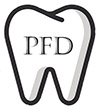Wisdom Teeth Extraction
The third molars, more commonly known as wisdom teeth, are the final teeth to erupt in adulthood. Usually arriving between ages 17 and 25, wisdom teeth can cause problems in the mouth due to their size and location. In many cases, they will need to be extracted.
Problems That Lead to Wisdom Tooth Extraction
When wisdom teeth attempt to erupt through the gum, the following situations can occur.
- Decay. Wisdom teeth can become decayed because they are so hard to reach and keep clean. The decay can spread quickly through the tooth, causing infection and pain that leads to extraction.
- Abscess. As wisdom teeth erupt, they cause pockets to form in the gums. These pockets collect bacteria, which can grow into an abscess. Left untreated, the infection can spread into other parts of the body, causing serious health problems.
- Impaction. Wisdom teeth become impacted when they erupt horizontally or simply have no room to come in. The impaction can lead to cavities or root destruction in existing teeth.
- Pain. The eruption of wisdom teeth is slow and painful, even if there are no complications. In many cases, the teeth begin coming in when a young adult is just starting college or a first job, making the discomfort stressful and distracting.
The Wisdom Teeth Extraction Process
The patient’s teeth will be x-rayed, in some cases with 3-D cone imaging, to determine the position of the teeth, the relationship with other teeth and likely outcome of the eruption. If extraction is required, the patient will be sedated and the wisdom teeth quickly removed. If there are no other complications, the procedure is over in less than an hour. Patients with infection may need to complete antibiotic therapy during the healing process.
While wisdom teeth are a normal part of young adulthood, they can have a serious effect on oral health. Anyone who has pain or suspects they may have an infection due to wisdom teeth should consult with a dentist immediately.

